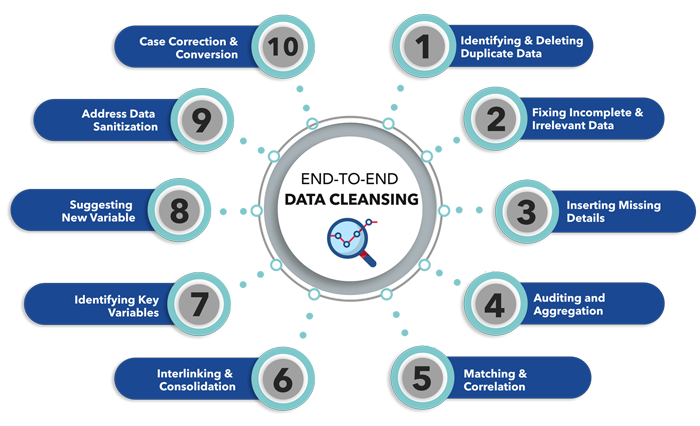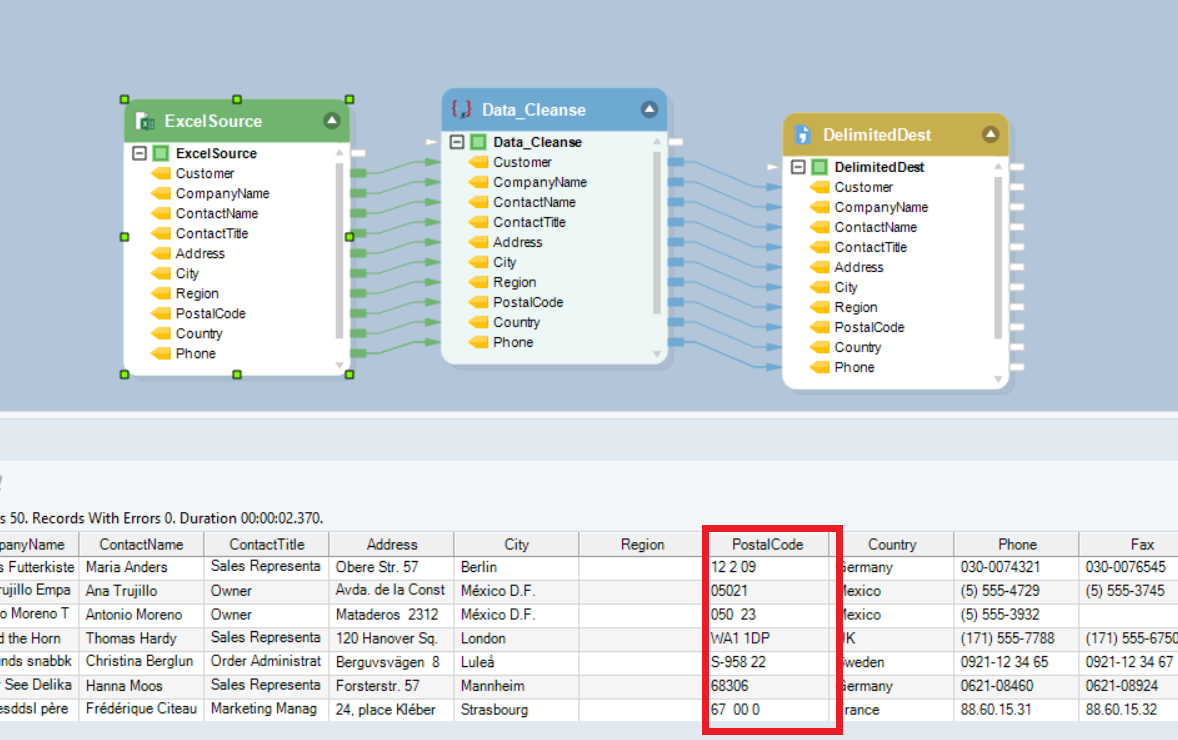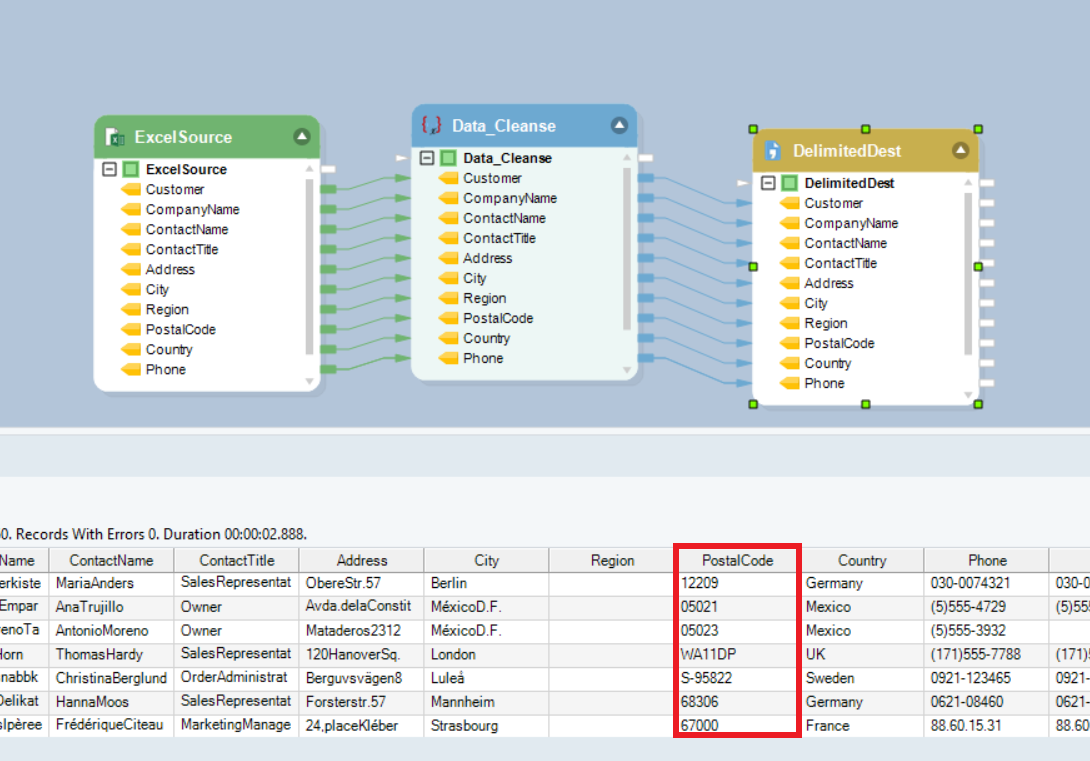
Enhance Data Reliability with Data Scrubbing
One of the most vital assets of a business is its data, which makes good data management the key to running a successful enterprise empire. As organizations grow, their data volume increases, making it challenging to identify inaccuracies or errors they may contain manually.
Erroneous data can cost large sums of money. Therefore, businesses must ensure that their enterprise data is clean, good-quality, error-free, and readily available for reporting and analysis to be cost- and time-effective. This is where data scrubbing comes into play.
Let’s start by understanding why it is essential and how data scrubbing tools simplify this process.
What is Data Scrubbing?
Scrubbing data is cleaning raw data and translating it into an accurate, clean, and error-free format. Data can be erroneous for various reasons, such as improper formatting, human errors during data entry, missing data, etc.
Data scrubbing improves data quality by removing duplicate, incorrect, incomplete, or poorly formatted data.
Is it Different from Data Cleaning?
Data cleaning and data scrubbing are often used as synonyms. On a surface level, the two terms can be used interchangeably. However, data cleaning and scrubbing differ on a technical level. Data cleaning is the broader term for preparing analytics-ready data. Data scrubbing comes under the umbrella of data cleansing, which deals with removing data inconsistencies and ensuring proper formatting.
Importance of Data Scrubbing
Effective data cleansing or scrubbing is essential as it helps businesses direct their resources towards value-adding activities instead of manual data cleaning and scrubbing. Simultaneously, it highlights opportunities for cost-cutting. With clean, trusted data at hand, companies can smoothly execute daily operations and make more accurate decision-making over the long term.
Consider the example of a Logistics function at an eCommerce company.
Suppose the company has clean, consistent customer data at hand. The company can access crucial insights readily, such as which regions create the most orders, what products are currently popular, and the average order size.
Armed with this information, the department can arrange its warehouse and delivery processes to ensure quicker and more cost-effective order fulfillment, customer information management, and more accurate market and sales trend analysis. This information must be reliable and trustworthy so that the business can make sound decisions to set up successful strategies.
By comparison, erroneous or flawed data would make the analysis incorrect, which can lead to:
- Time-intensive processes
- Additional costs
- Additional labor is required to correct the errors
- Lower efficiency
- Less productivity
- Poor decision-making
In the long run, persistent data quality issues can lead to your business losing customers due to mounting inefficiency and constant miscommunications. Therefore, it is essential to have a data quality strategy in place.
An organization gathers data from various external and internal sources. To get maximum and valid use of data, it must be cleaned and compiled before going through other processes.

Source: Allied Infoline
How Data Scrubbing Simplifies Data Management
Data Scrubbing plays a vital role in a wide range of data management processes, such as:
Data Integration
One of the core data management processes is Data Integration. It is the process of combining data from different sources to consolidate it in a single platform. A data scrubbing tool cleans the incoming data so that the integrated data set is standardized and formatted before being fed into the destination system.
Data Migration
Data Migration involves the transfer of files from one system to another. It is essential to maintain data quality and consistency during this transfer so that the destination data is correctly formatted and structured and there is zero duplication. The transfer process also involves a large volume of data. Data scrubbing tools help clean your information efficiently, ensuring better data quality throughout the enterprise.
Data Transformation
All data must be transformed before it is loaded onto the destination of your choice to meet the system’s criteria of format, structure, etc. Data Transformation involves applying specific rules, filters, and expressions to the data before loading it into a system. A data scrubbing tool helps cleanse the data using built-in transformations, enabling you to meet the desired operational or technical requirements ahead.
ETL Process
Data scrubbing helps prepare data for reporting and analysis during the ETL (extraction, transformation, and loading) process. Data preparation ensures that only high-quality data is used for decision-making and analysis. For example, a retail company receives data from multiple sources, such as a CRM or an ERP system, containing erroneous information or duplicate data.
A good data scrubbing tool would identify the inconsistencies in data and correct them. The scrubbed data will then be converted into the standard format and loaded into a target database or data warehouse.
Data Scrubbing Steps
Here are some steps you can take to ensure your data is cleansed properly:
-
Identify Data Quality Issues:
Begin by analyzing the data to identify potential quality issues. This involves examining the data for inconsistencies, errors, duplicates, missing values, formatting problems, and other anomalies that can impact data quality.
-
Define Data Quality Rules:
Establish data quality rules based on business requirements and industry best practices. These rules define the criteria that data must meet to be considered clean and accurate. For example, rules can specify valid value ranges, data formats, uniqueness constraints, or referential integrity requirements.
-
Cleanse and Standardize Data:
Apply cleansing techniques to address data quality issues. This includes removing or correcting errors, filling in missing values, standardizing formats, and resolving inconsistencies. Techniques like data parsing, data validation, and data transformation are employed to bring the data in line with defined quality rules.
-
Remove Duplicates:
Identify and eliminate duplicate records from the dataset. Duplicate data can lead to inaccuracies and distort analysis results. Techniques such as record comparison, fuzzy matching, and data deduplication algorithms are used to identify and remove duplicates effectively.
-
Handle Missing Data:
Develop strategies to handle missing data appropriately. Depending on the situation, you may choose to discard incomplete records, impute missing values using statistical techniques, or gather additional information from reliable sources to fill in the gaps.
-
Address Inconsistencies:
Resolve inconsistencies within the data. This can involve identifying and rectifying discrepancies between related data fields, such as ensuring consistency between names and corresponding IDs or aligning data with predefined standards or reference data.
-
Document Data Scrubbing Process:
Maintain comprehensive documentation of the data scrubbing process. This includes recording the cleansing steps performed, data quality rules applied, and any assumptions made during the process. Documentation ensures transparency, facilitates future analysis and aids in troubleshooting.
-
Regularly Monitor and Update:
Data scrubbing is an ongoing process. Regularly monitor data quality, identify emerging issues, and refine the data scrubbing process accordingly. Stay proactive in maintaining data quality and make adjustments as the data evolves or new quality requirements emerge.
While this might seem like a lot of work, automated data scrubbing tools take away a lot of manual steps in preparing your data.
Benefits of Data Scrubbing Tools
Data scrubbing tools can help you skip the tedious and manual process of data cleaning, saving you the trouble of going through the entries individually, row-by-row, and inspecting them for any invalidities, missing values, etc. Instead, the tool cleanses the data through built-in transformations.
For example, consider the lead list delivered by your marketing team. Imagine going through each contact’s name to verify the complete addresses, phone numbers, and email IDs. Erroneous lead entries can create operational issues and lead to time wastage.
Data scrubbing tools can help you remove errors via automated processes to systematically inspect the data, using different rules and algorithms to identify and correct any flaws. Hence, making the analysis and business intelligence more straightforward and effective.
Scrubbed data improves your enterprise data quality, making it readily available for accurate and valuable data analysis. Thus, making them a worthy business investment.
How To Simplify the Data Scrubbing Process
Astera Centerprise offers business users an easy data scrubbing, cleaning, and integration solution. The solution features built-in connectors that can retrieve information from disparate data sources.
Various transformations and automated data validation processes help users perform various data-related tasks, including data scrubbing, data cleansing, data quality, and delivering standardized datasets to their chosen destination.
Centerprise contains features, such as Data Cleanse Transformation, that can be used to scrub and attain a clean data set for further use.
Let’s look at how to scrub data using the data cleansing transformation in Centerprise.

Figure 1- Data set containing white spaces and formatting issues
The dataset shown in Figure 1 contains information regarding different customers, and as you can see, there are some white spaces between the postal codes, and it is not formatted correctly. Thus, we will use the Data Cleanse transformation on this data set.

Figure 2 – Features of Data Cleanse Transformation
Figure 2 shows the various cleansing options present in this transformation. You can remove white spaces, letters, digits, and punctuation, or specify any other characters you want to remove. Secondly, you can replace null characters or find and replace any other characters by applying numerous options in the fields with one click. You can also use custom expressions to clean your data.
Figure 3 shows the data preview after applying the Data Cleanse transformation.

Figure 3- Cleansed dataset
As you can see, all the white spaces have been removed, and the data is now correctly formatted. Furthermore, it can be transferred to any destination of your choice.
Other transformations like Data Profiling and Data Quality Rules enable users to profile data sets to get a statistical breakdown and set quality standards to identify records that contain errors or warnings.
Streamline Data Scrubbing With Astera Centerprise
The easy-to-use interface and drag-and-drop transformations in Astera Centerprise simplify information scrubbing. It allows business users and data analysts to clean high-volume datasets in just a few minutes without writing code. Users can also set up automated data pipelines. These pipelines use automation and job scheduling features to execute data scrubbing jobs without any manual intervention. Scrubbed and cleansed data can help you save substantial time and resources when transforming data.
 Astera AI Agent Builder - First Look Coming Soon!
Astera AI Agent Builder - First Look Coming Soon!


